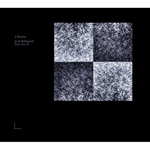|
|
 |
Dusted Reviews
Artist: Jacob Kirkegaard Album: 4 Rooms Label: Touch Review date: Jun. 1, 2006 |

|
|
|
 |
It’s been said that many make sacrifices for their music, but, in the recording of 4 Rooms, Jacob Kirkegaard went above and beyond. Almost 20 years after the Chernobyl disaster, Kirkegaard traveled into the villages surrounding Chernobyl, places largely uninhabited and still teeming with radiation, an unheard and unseen but never forgotten result of Reactor 4’s fateful meltdown in April 1986. The project focused on formerly public spaces, rooms once full of people, life and social interaction, and explores the results of the nuclear contamination on the behavior of sound in these physical spaces. The recordings are as much a science experiment as they are an artistic endeavor; Kirkegaard conducted the recordings not in the hopes of guaranteeing the most alluring or exciting results, but in order to gain a perspective on the sonic effects of the radiation in these large spaces, and, as he puts it on his website, “unlock a fragment of the time existing inside the zone.”
The recording process of 4 Rooms was inspired by Alvin Lucier’s “I am Sitting in a Room,” in which Lucier recorded his voice in a specific room, and played it back into the same space in which it was recorded. Kirkegaard’s more austere process involved the removal of human interaction, instead making 10-minute recordings of the ambient sound in each room. The recordings were played back into the rooms, and the results recorded again, up to 10 times. As the recordings became more and more layered, a ghostly ambience arises from what the human ear hears as silence. To a rational mind, 4 Rooms documents the acoustic effects of the spaces which Kirkegaard recorded; to a more poetic mind, the album is an exploration of the sonic specters of lives forgotten at a moment’s notice, the spirit of spaces once alive with human activity, now inhabited only by memories, some of the hardier local flora and fauna, and the toxic radiation that continues to seep from the site two decades after the disaster.
Kirkegaard’s recordings focus on Pripyat, a village northwest of the city of Chernobyl that, as the home of the nuclear power plant, was ground zero on April 26, 1986. An auditorium, gymnasium, and a swimming pool in Pripyat were chosen as recording venues, as well as a church in the neighboring village of Krasno. Each of the spaces has particular aural qualities, and 4 Rooms is a more diverse listening experience than one might initially expect. The differences aren’t wholly in the tonality of the rooms’ ambience, but also the rhythms that emerge as the recordings are layered – flutters and rumbles birthed by the waveforms of the reverberating sound. “Swimming Pool” feels strangely underwater, though photo documentation of the room shows only a shallow layer of water in the decaying reservoir. “Gymnasium” initially shimmers in an almost metallic fashion, and “Church” and “Auditorium” sound eerily haunted, the build-up creating an aura of surprisingly actives drones.
While some may not find 4 Rooms aesthetically gripping, the conceptual power behind the project is hard to deny. The album is the music of a people disappeared, an entire population whose lives came to an abrupt halt, even if they escaped to safety. 4 Rooms, though it contains nary an iota of purposefully created human sound, is an document of not just the aural qualities of empty spaces, but the spiritual ambience of this “Zone of Alienation,” a place that, if abandoned, remains heavy with the pathos of those who were forced to leave.
By Adam Strohm
|







